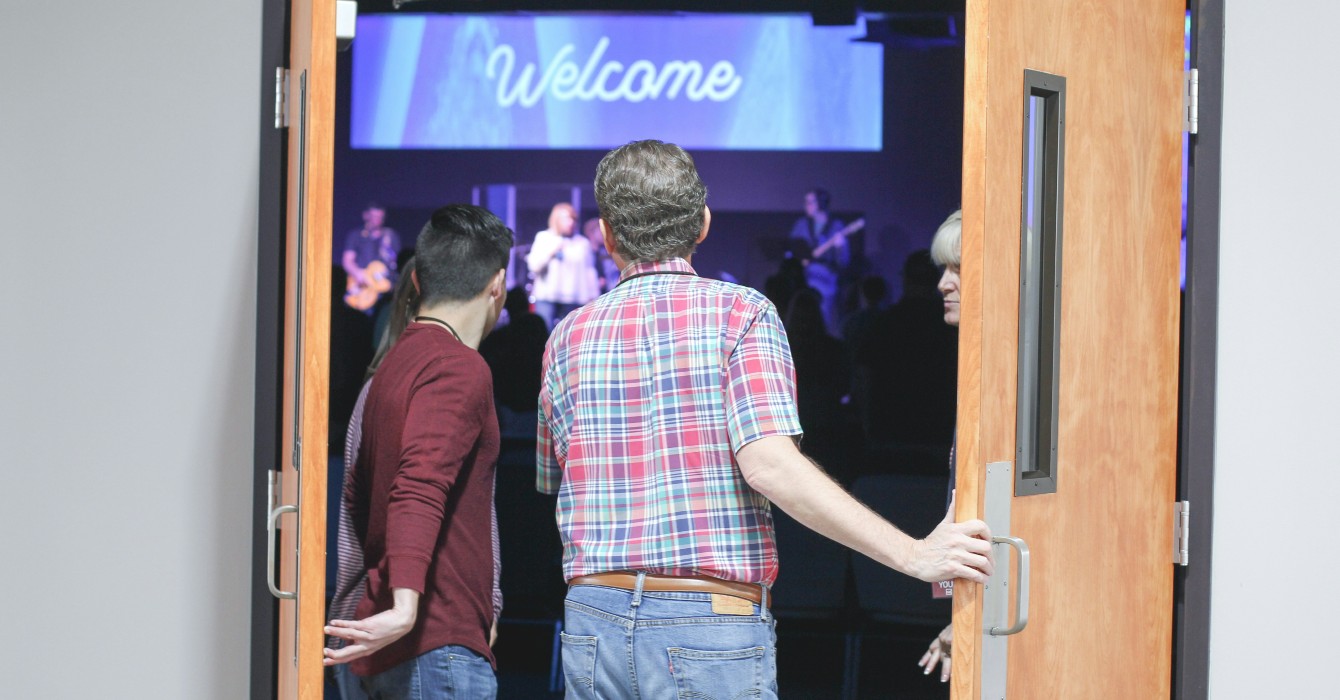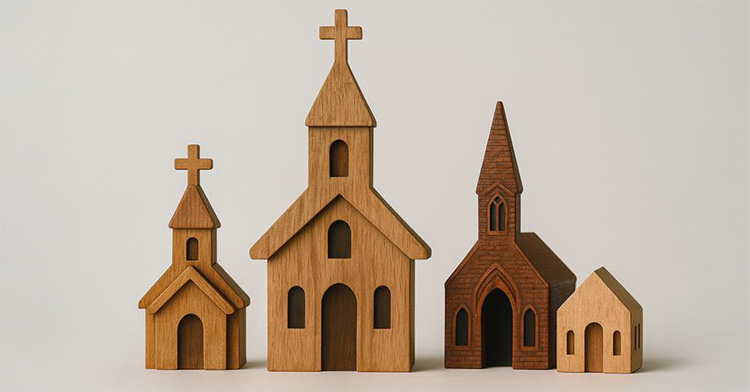Editor’s note: This essay has been adapted from a longer version.
As I ponder the future of congregational life in America, I am filled with hope. I find the future to be exciting, because it is a mix of challenge, change, uncertainty and creative possibilities.
More importantly, my hope is invigorated by the young clergy I have come to know and walk alongside in recent years; they are more than up to this challenge. Indeed, if I could, I would turn back the calendar of my life 60 years and begin again.
Two years ago, just as we began to settle into the long winter of COVID, this haunting quote from Andy Crouch, the Praxis partner for theology and culture, froze my attention: “From today onward, most leaders must recognize that the business they were in no longer exists. This applies not just to for-profit businesses, but to nonprofits, and even in certain important respects to churches.”
True indeed! The great pandemic has brought church life as we know it to a halt. It has roused us from a deep sleep and waked us up to seismic cultural and religious realities we too long ignored. This shift has left many pastors and congregations in a quandary, depressed and paralyzed.
My sense of church has been shaped by the nearly 40 years I spent as a parish pastor and the 12 years I spent at a public university as the founding director of the Lake Institute on Faith & Giving at Indiana University. During those 12 years, it was my privilege to work with nearly 3,000 congregations reflecting the diversity of congregational life in America.
What I discovered was this: most congregations have difficulty thinking about their future. For many, trapped in a one-year-at-a-time survival mode, their tomorrow is but a blur. I also observed that savvy pastors recognized that they dare not sit back permitting fate to run its course if their congregations are to have a tomorrow.
Their quandary is this: how do you plan for tomorrow in a fractured, fast-moving and ever-evolving world?
I think there are three questions clergy and congregations should address as they contemplate their tomorrows:
- How do we plan for an uncertain future?
- How can we best manage the messiness of change and innovation?
- What are the questions we should be asking as we face the future?
In exploring these questions, I discovered several wise and insightful resources to share; clergy need conversation partners to walk alongside them as they navigate the murky shoals of congregational life:
- “The Great Upheaval: Higher Education’s Past, Present and Uncertain Future,” by Arthur Levine and Scott Van Pelt
- “The Practice of Adaptive Leadership,” by Ronald Heifetz, Alexander Grashow and Marty Linsky
- “A Secular Age,” by Charles Taylor
- “The Pastor in a Secular Age,” by Andrew Root (part of the trilogy “Ministry in a Secular Age”)
How do we plan for an uncertain future?
In their book “The Great Upheaval: Higher Education’s Past, Present and Uncertain Future,” Arthur Levine and Scott Van Pelt lay out a tripartite methodology — a three-way mirror — that enables organizations to address this question. To gain insight into the future, they write, it is essential to look in three directions: backward, forward and sideways.
The look back unveils something as to the DNA of a congregation. How has it managed change in its past? The look forward focuses on the forces changing America,providing a window into the issues framing the horizon: demographic, economic, technological. The look sideways reveals the way other organizations have managed change.
How can we best manage the messiness of change and innovation?
Ronald Heifetz, senior lecturer in public leadership at the Harvard Kennedy School, has created a process by which institutions may redemptively address change and innovation: the practice of adaptive leadership.
What is adaptive leadership? It is based on the conviction that difficult problems are best solved with input from the entire organization. The adaptive process begins with the creation of a guiding coalition. This is a task force that serves as a think tank — in the case of a church, a congregation-based leadership laboratory.
What are the questions we should be asking as we face the future?
Ecclesial questions have to do with the forms and functions of the church and our life together. Institutional change usually falls into two buckets: the adaptive bucket and the disruptive bucket.
Adaptive congregations embrace change but believe that the church will essentially remain as it has always been. Today’s more disruptive voices believe that the church as an institution or denomination is passe.
Both visions raise ecclesial questions, questions for both established congregations and new emergent faith communities to wrestle with in fidelity to their heritage, calling and purpose.
- What is a church? What purpose do congregations serve?
- How do emerging new forms of congregational and community life fit into the more traditional and denominational understandings as to what a congregation is?
- How do stand-alone faith communities see themselves; to whom are they accountable?
- What ultimately shapes the purpose and identity of faith communities primarily built around personal interests, political values or social values?
- How will online congregations administer the sacraments, nurture faith formation, build a sense of community and mirror the kingdom of God?
We also must be asking theological questions in our secular context. The church exists to witness to God’s redemptive presence in the world. However, the world in which the church now lives is not the world in which many of us grew up. As the philosopher Charles Taylor writes, we are living in “a world of secular time.”
A secular world is not a world without religion; it is a world where belief in God is understood to be but one option among others. In a world where is it assumed that God is absent, where unbelief is normal, little or no connection is perceived between God and everyday life. In short, it is a world shorn of any sense of transcendence, any sense of God.
Ministry in a secular age offers a rare opportunity for congregations to reframe the good news as they pour the aged wine of the gospel into new wineskins. In short, the challenge facing congregations today is how they will breathe new life and meaning into an old and oft-abused word: evangelism!
To ignore these questions, I fear, is to be in danger, as congregations, of becoming little more than nesting places for preexisting Christians.
The role of the pastor in a secular world is to be more than an “institutional curate,” as Root writes in “The Pastor in a Secular Age.” It is to be a shepherd who leads people into “experiences of the ministering God.”
The mission of the congregation in a secular world is to focus on resonance, not relevance, on revelation, not innovation. A resonant congregation seeks “a narrative of connection to the world and those in the world who call out to us,” Root writes in a companion book, “The Congregation in a Secular Age.” It is sensitive to the yearnings of the secular soul that longs to live life more fully and find meaning in everyday life. It is a visual and experiential catalyst as it exposes the sacred ever lurking amid the nooks and crannies of everyday life.
I have found congregations to be amazingly resilient. They may be on life support, but they refuse to throw in the towel. They may be chronic one-year-at-a-time congregations, but they refuse to shutter their doors.
What is the source of their tenacious hope? That hope is rooted in their sense of calling and their trust in a slow God who nonetheless shows up.
I have not offered any answers to the questions I posed; to do so would be presumptuous, if not downright impertinent. The questions are intended to serve as channel markers for clergy and congregations as they traverse their uncharted future. They are questions to be addressed by congregations in the light of their particular ecclesial traditions and theological orientations.
The changes blowing in the wind are clearing out the cobwebs of stale church life. That wind is more than the howl of secularism. The blowing wind is the ruach — the wind, the breath, the spirit of an uncaged God. To a confused and bewildered Nicodemus, Jesus whispered this wisdom: “Listen to the wind, Nicodemus, listen to the wind!” The challenge of congregations grappling with an uncertain future is to listen. To listen, then dare to pour the new wine of a living God into new wineskins.
The changes blowing in the wind are clearing out the cobwebs of stale church life.















